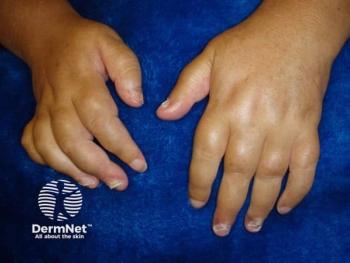
Impact of Data on Generalized Pustular Psoriasis
Aaron S. Farberg, MD, and Jeffrey Crowley, MD, share take-home messages on the impact of the generalized pustular psoriasis study.
Episodes in this series

Aaron S. Farberg, MD: What impact will these data have on the awareness of GPP [generalized pustular psoriasis], the symptoms as well as the flares? We touched on this a little, and you’ve given the story of the urgent care. Do you think that this information is going to help any of that?
Jeffrey Crowley, MD: It is if the information is disseminated and we get this story out there. Now that we have some interest in products being developed, there’s more interest in educating about this disease, not just to dermatologists but also to primary care and emergency department physicians—people who are going to encounter this disease. Also, we know that it can flare and can have such an impact on a patient’s quality of life. That’s slowly getting out there. That’s important, and it’s important for dermatologists to play a role in the dissemination of data and information to bring this disease out from under the rug, put it in the spotlight, and talk about the fact that we can do something about it.
Aaron S. Farberg, MD: So true. We’re at the final word. Dr Crowley, I’m going to give you the last word, so start thinking about your answer. What are the take-home messages? Is there anything else you want our viewers to take home from this paper? I’ll offer my 2 cents. Although GPP is rare, it has a huge impact on the patient’s lives. It’s important to study. More important, now that we have a therapy available, we need to understand this disease and how we can help these patients.
Jeffrey Crowley, MD: Absolutely. I agree with all that. It’s up to us to educate patients about this disease and to educate our peers on the new treatments available to the acutely flaring patient. A lot more data are coming out. There’s been a lot of work in the last few years in terms of looking at patients with GPP, the impact of it on their lives, and what treatments have been done. If we can spread that message, we can identify this better and faster and get the patient relief. Those are the key things I want to see going forward.
Aaron S. Farberg, MD: Thank you, Dr Crowley, for joining me in this discussion. I hope the viewers have enjoyed this Dermatology Live® Between the Lines Journal Club experience. Thank you for tuning in. We’ll see you next time.
Transcript edited for clarity
Newsletter
Like what you’re reading? Subscribe to Dermatology Times for weekly updates on therapies, innovations, and real-world practice tips.





















